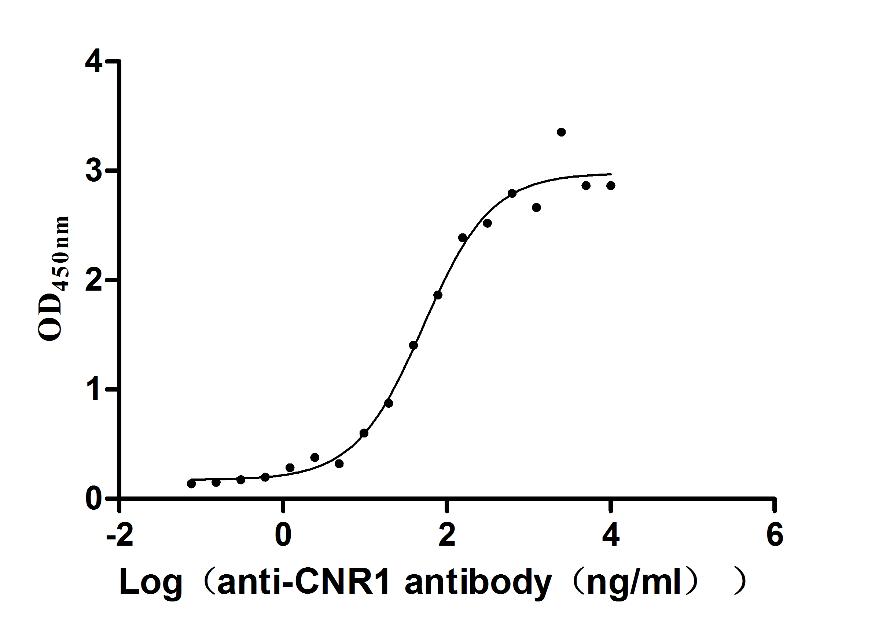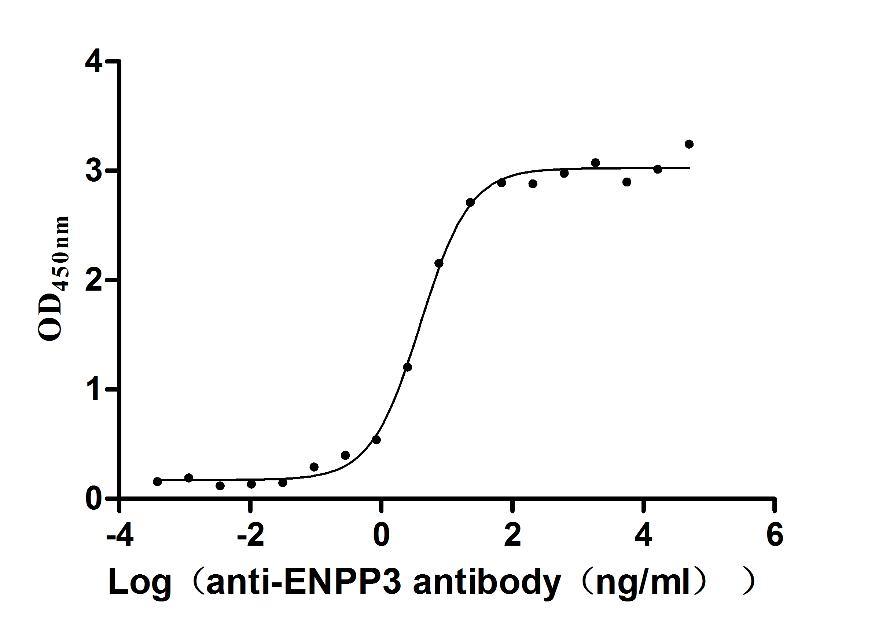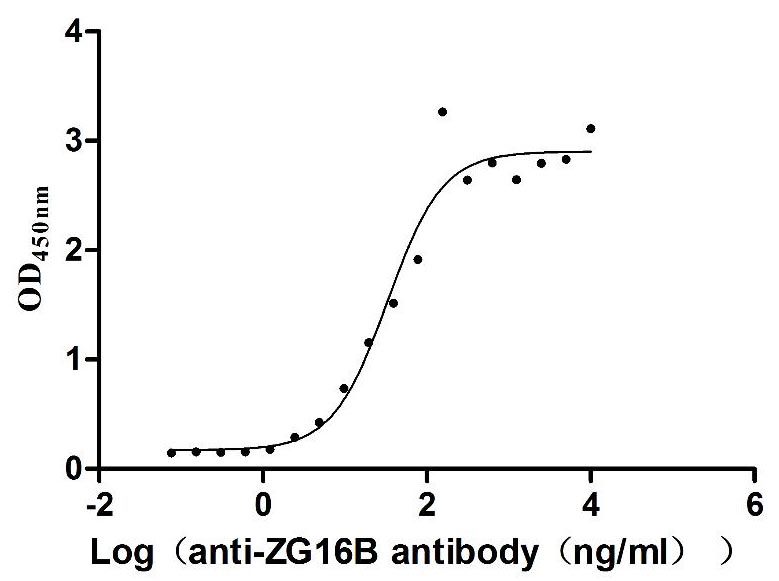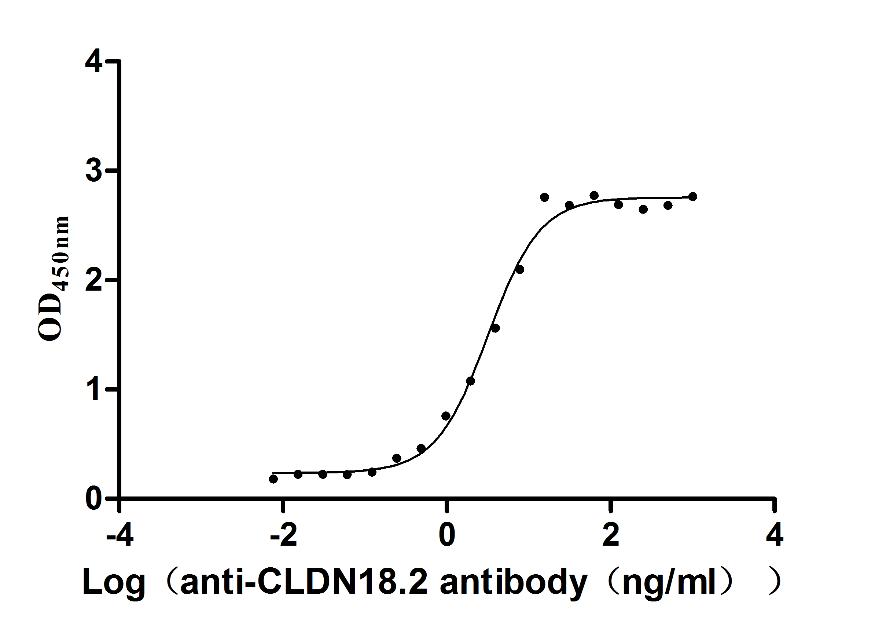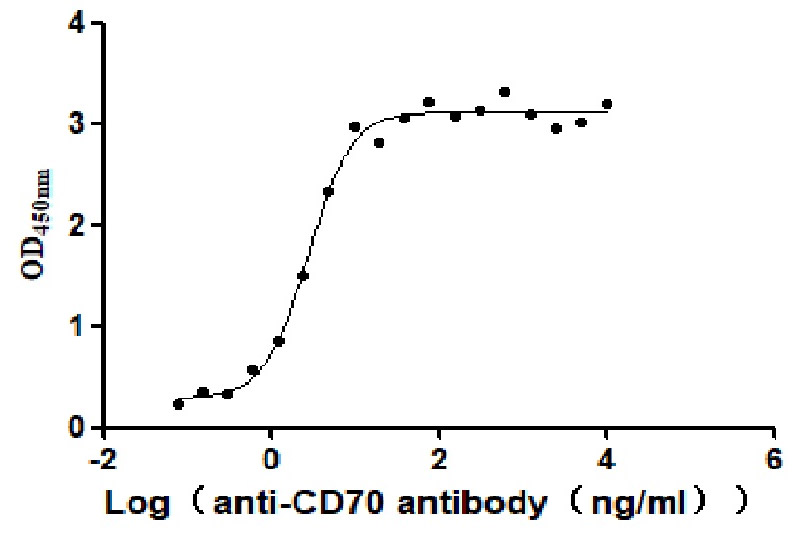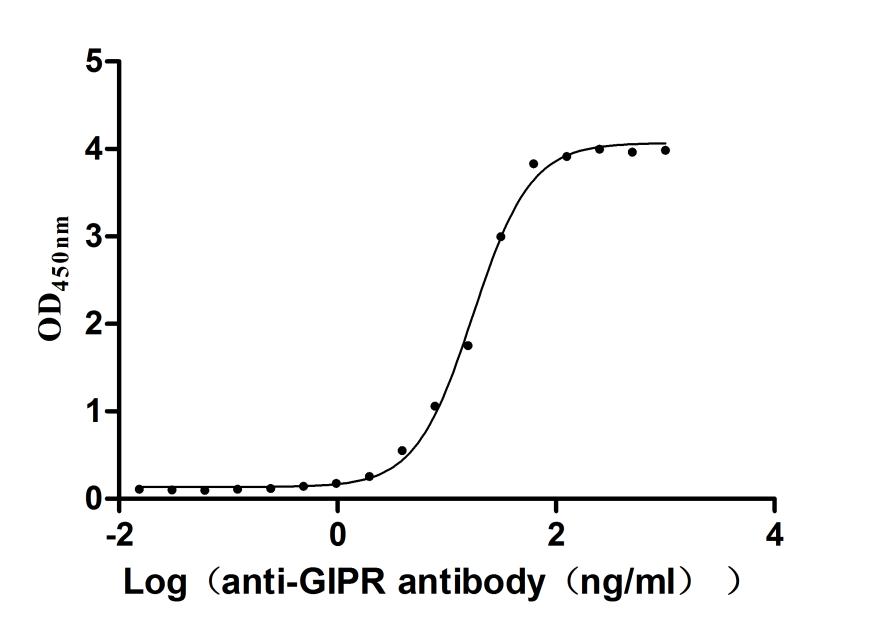Recombinant Drosophila melanogaster Neural-cadherin (CadN), partial
-
中文名称:Recombinant Drosophila melanogaster Neural-cadherin(CadN) ,partial
-
货号:CSB-YP521154DLU
-
规格:
-
来源:Yeast
-
其他:
-
中文名称:Recombinant Drosophila melanogaster Neural-cadherin(CadN) ,partial
-
货号:CSB-EP521154DLU
-
规格:
-
来源:E.coli
-
其他:
-
中文名称:Recombinant Drosophila melanogaster Neural-cadherin(CadN) ,partial
-
货号:CSB-EP521154DLU-B
-
规格:
-
来源:E.coli
-
共轭:Avi-tag Biotinylated
E. coli biotin ligase (BirA) is highly specific in covalently attaching biotin to the 15 amino acid AviTag peptide. This recombinant protein was biotinylated in vivo by AviTag-BirA technology, which method is BriA catalyzes amide linkage between the biotin and the specific lysine of the AviTag.
-
其他:
-
中文名称:Recombinant Drosophila melanogaster Neural-cadherin(CadN) ,partial
-
货号:CSB-BP521154DLU
-
规格:
-
来源:Baculovirus
-
其他:
-
中文名称:Recombinant Drosophila melanogaster Neural-cadherin(CadN) ,partial
-
货号:CSB-MP521154DLU
-
规格:
-
来源:Mammalian cell
-
其他:
产品详情
-
纯度:>85% (SDS-PAGE)
-
基因名:CadN
-
Uniprot No.:
-
别名:CadN; CG7100Neural-cadherin; Cadherin-N; dN-cadherin
-
种属:Drosophila melanogaster (Fruit fly)
-
蛋白长度:Partial
-
蛋白标签:Tag type will be determined during the manufacturing process.
The tag type will be determined during production process. If you have specified tag type, please tell us and we will develop the specified tag preferentially. -
产品提供形式:Lyophilized powder
Note: We will preferentially ship the format that we have in stock, however, if you have any special requirement for the format, please remark your requirement when placing the order, we will prepare according to your demand. -
复溶:We recommend that this vial be briefly centrifuged prior to opening to bring the contents to the bottom. Please reconstitute protein in deionized sterile water to a concentration of 0.1-1.0 mg/mL.We recommend to add 5-50% of glycerol (final concentration) and aliquot for long-term storage at -20℃/-80℃. Our default final concentration of glycerol is 50%. Customers could use it as reference.
-
储存条件:Store at -20°C/-80°C upon receipt, aliquoting is necessary for mutiple use. Avoid repeated freeze-thaw cycles.
-
保质期:The shelf life is related to many factors, storage state, buffer ingredients, storage temperature and the stability of the protein itself.
Generally, the shelf life of liquid form is 6 months at -20°C/-80°C. The shelf life of lyophilized form is 12 months at -20°C/-80°C. -
货期:Delivery time may differ from different purchasing way or location, please kindly consult your local distributors for specific delivery time.Note: All of our proteins are default shipped with normal blue ice packs, if you request to ship with dry ice, please communicate with us in advance and extra fees will be charged.
-
注意事项:Repeated freezing and thawing is not recommended. Store working aliquots at 4°C for up to one week.
-
Datasheet :Please contact us to get it.
靶点详情
-
功能:Cadherins are calcium-dependent cell adhesion proteins. They preferentially interact with themselves in a homophilic manner in connecting cells; cadherins may thus contribute to the sorting of heterogeneous cell types. May associate with arm neural isoform and participate in the transmission of developmental information.
-
基因功能参考文献:
- This is the first in vivo evidence for N-cadherin negatively and cell autonomously controlling collective migration. PMID: 25593128
- Study demonstrates that the classical cadherin, N-cadherin, and an atypical cadherin, Flamingo, act redundantly to instruct the targeting choices made by every photoreceptor axon. PMID: 23870124
- switching of CadN expression during neuronal differentiation involves regulated cation influx within neurons PMID: 22542600
- Results suggest that N-cadherin is regulated in a Schizo/Loner- and d-Arf1-dependent manner. PMID: 22595515
- These results suggest that, unlike their vertebrate counterparts, invertebrate cadherins may utilize multiple extracellular cadherin domains to form intercellular adhesive bonds. PMID: 22171007
- Data demonstrate that N-cadherin, DLAR, and Liprin-alpha function in a complex to regulate adhesive interactions between pre- and post-synaptic cells and provide a novel mechanism for controlling the activity of Liprin-alpha in the developing growth cone. PMID: 19766621
- DN-cadherin is required for spatial arrangement of nerve terminals and ultrastructural organization of synapses. PMID: 11906210
- N-cadherin mediates dendro-dendritic interactions between PNs and thus contributes to refinement of PN dendrites to single glomeruli. PMID: 15066265
- This study propose N-cad, a homophilic cell adhesion molecule, acts in a permissive fashion to promote subclass-specific sorting of ORN axon terminals into protoglomeruli. PMID: 15066266
- N-cadherin has a role in the first stage of the two-stage layer-selection process of R7 photoreceptor afferents PMID: 15673571
- During the first half of pupal development, N-cadherin is required for R7 photoreceptor neurons growth cones to terminate within a temporary target layer in the medulla PMID: 16123134
- DN-cadherins integrate input from at least two signaling pathways, resulting in a coordinated cell movement PMID: 16887833
- CadN alternative splicing might provide a novel mechanism to fine-tune its adhesive activity at different developmental stages or to restrict the use of high-affinity 18b-type isoforms at the adult stage. PMID: 16914742
- CadN mediates homophilic adhesive interactions between R7 growth cones and medulla neurons to regulate layer-specific target selection. PMID: 17320070
- N-cadherin expression on one growth cone in a specific layer is essential for targeting of processes of another neuron to this layer. PMID: 18400161
- N-Cadherin gene maintained three sets of mutually-exclusive alternatively-spliced exons for over 400 million years. PMID: 19343204
显示更多
收起更多
-
亚细胞定位:Cell membrane; Single-pass type I membrane protein.
-
组织特异性:In the embryo, the protein first appears in the mesoderm at stage 9 and is present in the myoblasts and muscle fibers by stage 12 and stage 14, respectively. At stage 12 the protein is also located in the axons of the entire CNS, but not in the glial cell
-
数据库链接:
Most popular with customers
-
Recombinant Human IGF-like family receptor 1 (IGFLR1), partial (Active)
Express system: Mammalian cell
Species: Homo sapiens (Human)
-
Recombinant Human C-X-C chemokine receptor type 4 (CXCR4)-VLPs (Active)
Express system: Mammalian cell
Species: Homo sapiens (Human)
-
Recombinant Human Cannabinoid receptor 1 (CNR1)-VLPs (Active)
Express system: Mammalian cell
Species: Homo sapiens (Human)
-
Express system: Mammalian cell
Species: Macaca fascicularis (Crab-eating macaque) (Cynomolgus monkey)
-
Recombinant Human Pancreatic adenocarcinoma up-regulated factor (ZG16B) (Active)
Express system: Mammalian cell
Species: Homo sapiens (Human)
-
Recombinant Macaca fascicularis Claudin 18.2 (CLDN18.2)-VLPs (Active)
Express system: Mammalian cell
Species: Macaca fascicularis (Crab-eating macaque) (Cynomolgus monkey)
-
Recombinant Human CD70 antigen (CD70), partial (Active)
Express system: Mammalian cell
Species: Homo sapiens (Human)
-
Recombinant Human Gastric inhibitory polypeptide receptor(GIPR),partial (Active)
Express system: Mammalian cell
Species: Homo sapiens (Human)


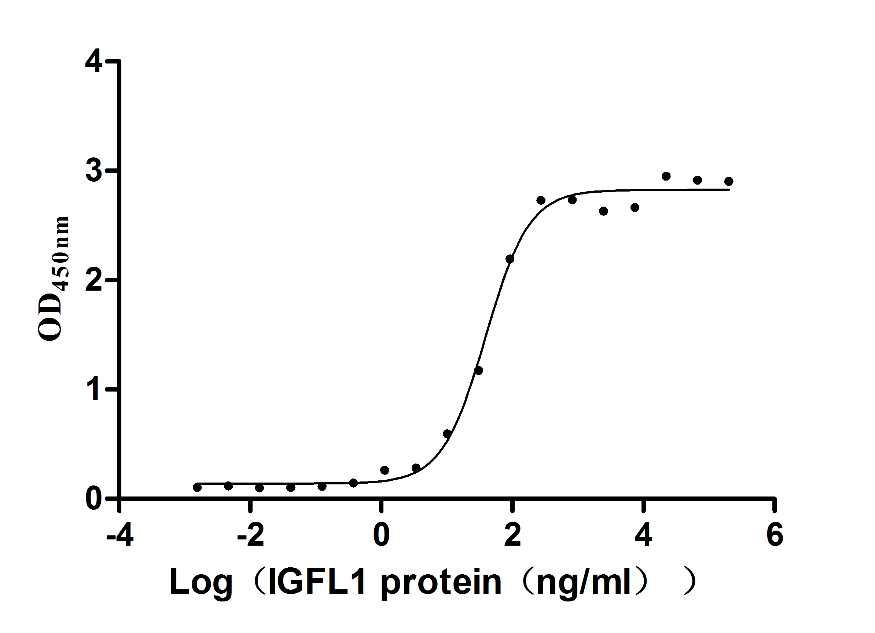
-AC1.jpg)
